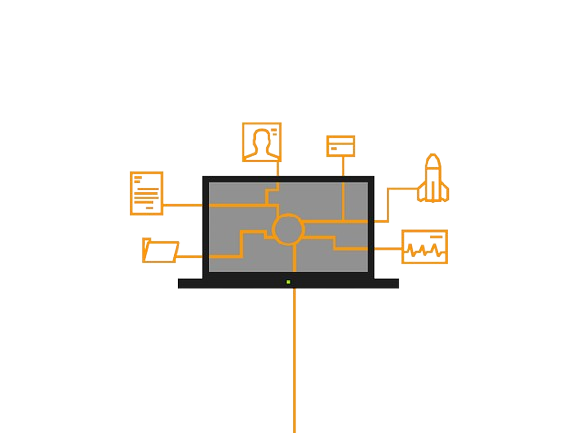
The internet can be dangerous. Criminals set up malicious websites to trick people into giving away personal information or making harmful choices.
As of July 2022, Google reported that it issues 5 million warnings about malicious sites every day. In early 2020, there were about 2 million phishing websites. Both phishing and malware are big problems with serious security risks.
This blog will explain what makes malicious websites dangerous and how you can protect yourself.
What is a malicious website?
Malicious websites are created to cause harm. They are not safe eCommerce stores, financial services, or web applications. Their goal is to steal valuable data or install harmful software on visitors’ devices.
Malicious sites often look very similar to well-known, trustworthy sites. For example, fake Amazon or PayPal sites are common. These malicious sites rarely show up in regular search results. Instead, people find them through misleading emails and pop-ups.
How do malicious websites work?
Malicious websites come in two main types: phishing sites and malware sites.
- Phishing sites try to trick visitors into entering sensitive information, like credit card numbers, login details, or home addresses. These sites often copy popular sites like eBay or PayPal.
- Malware sites are made to install harmful software on a visitor’s device. This malware can steal data, disrupt system operations, or perform unwanted tasks like crypto-mining. Here are some common ways malware sites work:
- Drive-by downloads: Malware is installed without the user’s knowledge, often through corrupted JavaScript or plugins, with no prompts or signs of infection.
- Malicious files: Phishers may send .exe files via email attachments or pop-up downloads. These files often seem like useful apps, like antivirus checkers or media players. Clicking on these links can install malware.
- Malvertising: This method uses corrupted ads to spread malware. These ads may look normal but, when clicked, download malware or redirect users to other malicious sites.
Some attacks use real sites to trick users. For example, attackers might add malicious redirects to a regular web page, leading users to harmful content.
Web applications can also be targeted by cross-site scripting or SQL injection attacks. What seems like a normal website could have hidden dangers.
Examples of malicious websites
Malicious websites often look almost identical to real ones. Cybercriminals can easily copy the look of payment portals or news sites.
For example, the phishing network BAHAMUT runs fake news websites. They took over old sites like Techsprouts and made a complex network of fake content and social media accounts. BAHAMUT used these sites to deliver malware to high-value individuals in South Asia and the Middle East.
Other attackers target a wide audience with fake versions of well-known brands. Some recent examples include:
- Fake PayPal sites that claim user accounts are limited and ask for personal information.
- Fake Amazon sites appearing around Prime Day, either selling goods or offering “solutions” for streaming problems, asking for lots of personal data.
- Fake eBay sites that link to emails asking for “credit card updates” or messages from fake members.
- Fake government services in the UK offering fake Covid-19 tax refunds that are actually malware. In the USA, similar scams affect tax filing periods.
These fake sites are very similar to real ones but have small differences. There are warning signs to look for, but at first glance, they often seem real.
How to identify a malicious website
Malicious websites often have common features, such as:
- Misspellings or errors: These are unusual in official or branded content.
- URLs with HTTP instead of HTTPS: HTTPS means the site is secure and encrypted.
- Requests to download apps: Malicious sites often ask users to download apps automatically.
- Fake prizes: Sites promising prizes to certain visitors are likely fake.
- Suspicious security alerts: Beware of sites offering virus protection or saying your system is out of date without a request from you.
- Unusually generous deals: Deals that seem too good to be true or are not advertised elsewhere might be fake.
- Slightly incorrect domain names: Scam sites often have small variations in their domain names, like “Amazon1” instead of “Amazon.”
- Thin contact and background information: Fake sites usually provide little real information about their company, and their contact details may be false.
What happens if I visit a malicious website?
Visiting a malicious site may have few immediate consequences, especially if you have good security software. However, there can be serious risks:
- Security weaknesses: Malware from a drive-by download can start collecting data and expose vulnerabilities.
- Damage from malicious code: JavaScript infections can cause file damage, redirects, or system collapse.
- Spreading malvertising: Clicking on malicious ads can spread problems to other users and sites.
- Browser hijacking: Some malware takes control of your browser, spreading further and monitoring your activities.
- Data loss: Phishing sites often aim to steal confidential information, which can be costly for companies.
How to secure your employees from malicious websites
To reduce the risks of malicious websites, follow these steps:
- Update regularly: Keep your operating system and apps, including web browsers, up to date.
- Use reputable antivirus software: Ensure all devices have up-to-date antivirus and anti-malware tools.
- Be cautious with emails: Avoid opening unexpected attachments or following suspicious links. Most phishing attacks come via email.
- Verify website safety: Check URLs and use detection methods to assess website legitimacy. Do not download unwanted files or accept notifications unless you are sure the site is safe.
- Check web URLs: Ensure they are what they claim to be. If unsure, ask the website owner about their security practices.
- Segment networks: Limit employee access to core resources and separate them from less secure areas.
- Train staff: Educate employees about device security, credential management, phishing emails, and general web safety. Establish clear protocols for safe online behavior.

Hi, I’m Chibuzor Abraham from Nigeria. I love technology, especially VPNs, which protect your online privacy. I manage Ohiovpn.us, where I review VPN services for Ohio. Our reviews look at speed, security, and ease of use to help you find the best VPN. If you buy through our links, we get a small commission, which helps support our site at no extra cost to you.

